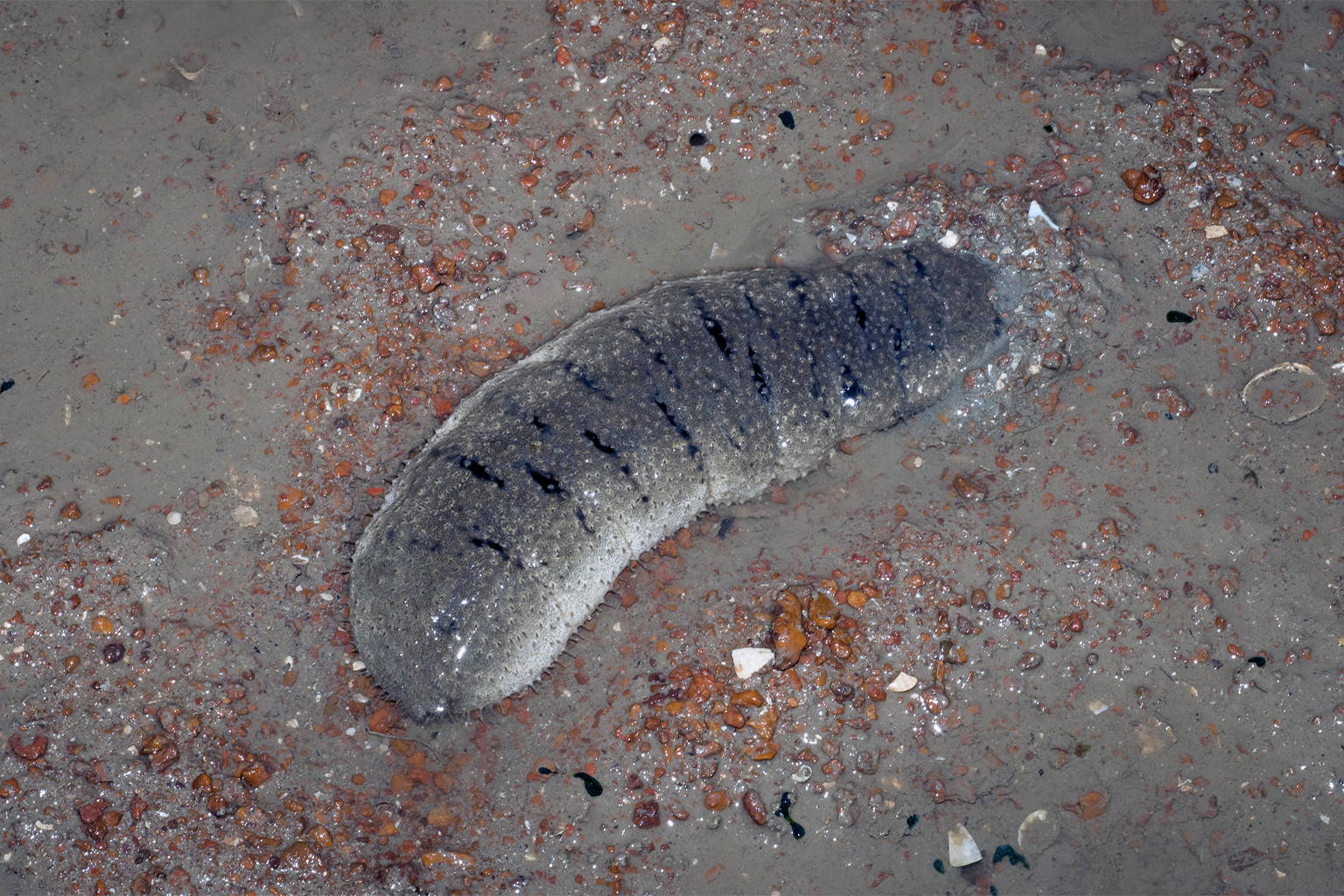- Fishers on Indonesia’s Sapuka island have decided to regulate their sea cucumber harvests.
- Since the 1960s, sea cucumber has been an important commodity for the island, but heavy harvest pressure has pushed the fishery to overexploited status.
- Sea cucumbers play a crucial role in the marine ecosystem by providing food to other species and adding nutrients and pH balance in waters around coral reefs and other shallow-water ecosystems.
MAKASSAR, Indonesia — At the end of September, fishermen on Sapuka Island in eastern Indonesia’s Flores Sea made a surprising announcement. They would regulate their sea cucumber harvests, they declared, taking only those specimens above a certain size, and from clearly designated areas during clearly designated times of the year.
Resident fishers and village officials on the 14-square-kilometer (5.4-square-mile) island that sits 225 km (140 mi) off the city of Makassar, capital of South Sulawesi province, voted to only harvest sea cucumbers weighing at least 200 grams (7 ounces). This applies to sea cucumbers from the Holothuriidae and Stichopodidae families.
Fishers collectively agreed to limit their fishing activities in the waters around the islands of Kembanglemari and Tinggalungang, which the national fisheries ministry has zoned for ecosystem rehabilitation. During the monsoon months of January and February, fishers committed to not fish in area the ministry designated a core conservation area. They also limited entry to fishing grounds: Fishers from outside South Sulawesi province would only be allowed to gather sea cucumber in the core conservation area.
Enforcement of existing fisheries regulations in this 320-km (200-mi) island chain that stretches between the main islands of Sulawesi and Sumbawa has been sporadic.
The waters are notoriously hard to traverse. Annually, there are reports of fishers losing control of their boats at sea, or getting lost at sea sometimes for weeks on end. Less frequently, reports emerge from the area of blast fishing: the coast guard occasionally intercepts illegal shipments of fertilizer from Malaysia, which is used to build the explosives; and fishers have been reported losing limb and life to faulty homemade bombs.

Marine earthworms
Sapuka Island’s local commitments have conservationists celebrating.
Sea cucumbers are found in almost all Indonesian waters, with high concentrations in the archipelagic areas of Sumatra’s Riau Islands, Java’s Thousand Islands, Sulawesi’s Spermonde Islands, and the island regions of Nusa Tenggara and Maluku.
Living on sandy substrate near coral reefs and seagrass beds, sea cucumbers act like marine earthworms. They burrow into the soil, aerating it in the process. They eat detritus on the ocean floor, thereby cleaning it of toxins and cycling nutrients back into local ecosystems.
On top of that, a recent review of commercially important sea cucumber species in Australia found that sea cucumber urine may even fight ocean acidification. The ammonia that sea cucumbers excrete raises the pH level of the water, thereby reducing the acidity of seawater around coral reefs.
“Sea cucumbers have an important role in the food chain as feed providers and substrate fertilizers,” said Ikhsan Mahfud, one of the program facilitators at the Romang Celebes Foundation (YRC), the Sulawesi-based nonprofit that held stakeholder meetings between government officials and fishers to draw up the commitments on sea cucumber limits.
“Various crustaceans, mollusks and fish feed on sea cucumber eggs, larvae and juveniles,” he said.

A valuable export and a nutritious meal
Sea cucumber is also prized economically in Indonesia, given the high demand for the product in China. The Indonesian fisheries ministry reports that in 2021, South Sulawesi produced 588.5 metric tons of sea cucumber, worth $2.9 million. A mere 1% of that was from farmed sea cucumbers, with the rest harvested from the wild by fishers on islands like Sapuka.
At $94.58 million in 2020, seafood exports made up 21% of the total $445.9 million of South Sulawesi’s total exports. Sea cucumber contributes to exports but is not among the top 10 products exported. For small islands like Sapuka, however, sea cucumber has historically been a major source of livelihood.
According to Awaluddin, the director of YRC Indonesia, sea cucumbers have been a key commodity for Sapuka Island residents since the 1960s. The local price for fresh harvested sea cucumbers is 300,000-500,000 rupiah per kilogram, or $0.90-$1.40 an ounce; and when dried, 2 million rupiah per kilo, or $58 per pound. Those are high earnings in South Sulawesi, where the minimum wage is $202 annually. Sapuka residents also eat sea cucumber, valuing the marine product for its high protein and nutrition content.
The high immediate earning potential is why the fishers’ commitment to sea cucumber limits needs to be lauded, experts said.

Andi Nur Apung, a program officer with YRC, said she believes the conservation limits will translate into a more productive fishery. “This agreement won’t hurt sea cucumber fishers but enable them to access better harvests,” she said. Nur Apung led the stakeholder meetings between fishers, local government officials, police and local military, to develop the limits. She says the next stage in the YCR program is to raise awareness about the rules to locals through workshops and brochures.
To implement their sustainable small-scale sea cucumber fisheries program in the region, YRC has received small grants from the Indonesian affiliate of U.K.-based BirdLife International; as well as the U.S.-based Critical Ecosystem Partnership Fund.
Banner image: Sand sea cucumber (Holothuria scabra) taken for research by LIPI’s Marine Bio Industry Center (BBIL). Image courtesy of BBIL LIPI.
A version of this story was reported by Mongabay’s Indonesia team and first published here on our Indonesian site on Nov. 7, 2022.
